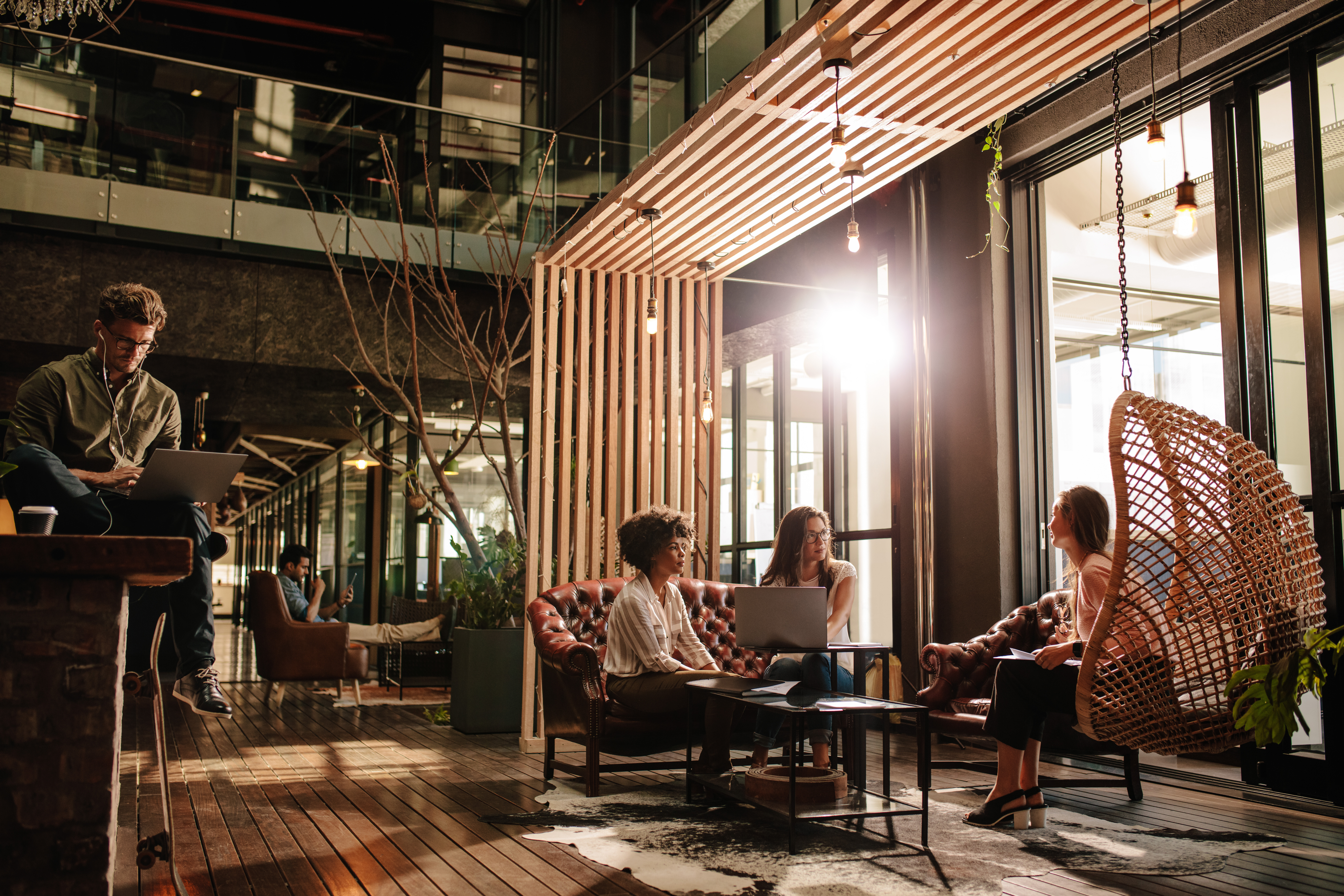News • May 28 2025

news • Oct 01 2024

news • Oct 01 2024
The post-pandemic workplace will continue to evolve. Previously, we looked at how the modern workplace has changed from the days of a morning commute that led to 8 hours behind a desk. Over a year later, things have continued to grow in exciting ways that improve everything from employee satisfaction to company profitability.
Companies are transforming office design in a way that’s enticing enough to draw employees back. From “home-like” offices to focus spaces, here’s a look at how the last year has brought significant changes to the workplace.
The modern, post-pandemic office emphasizes cultivating a space that feels like home. Whether that’s providing the mobility to move around and get comfortable on a couch or grab a coffee and a quick bite in the kitchen, employers now recognize that team members need to feel fully comfortable in their environment. This comfort is actually backed up by significant data: In a recent Gensler report, it’s stated that workplace design needs to respond to employees’ “human emotions.” As a result, employees are happier, and subsequently perform better .
One strong example of the “home-like” office is Sun Life, who developed their new Boston-area office “to make it feel more like home, with kitchens and living room areas, couches and the like,” the Boston Globe reported. The space even includes treadmills, prayer rooms, and a fire pit. An emphasis on allowing people to move around is important, as is being equipped with the technology that allows them to do so.
Providing home-like comfort also means equipping a space with materials that are comfortable to use. Offices are relying on ergonomic design more than ever, working to accommodate the physical needs of employees as well as the technological ones.
“Well-designed workspaces, complete with the right mix of purposeful furniture and technology, can reinforce employee satisfaction,” said Stephen Jay, Americas Head of Design Solutions, Project and Development Services, JLL. “We design and create spaces that exemplify our client’s culture and support their people by prioritizing their physical, social and mental wellbeing.”
Corporate success used to be conveyed by the image of the corner office. However, those days are long gone. Instead, the wellbeing of business is demonstrated in the ability to have a thriving, successful workforce.
The current workplaces that have the ability to draw in the most employees have designated “focus spaces.” In fact, Gensler’s 2023 report stated that employees said the most important function of office space to them is having a place to focus on their work.
Focus spaces can include “productivity-centric spaces” like libraries or other quiet zones, where conversation and taking phone calls are not allowed. For individual work, pods, phone booths and other small spaces provide both privacy and a distraction-free space. A strong example is Framery’s pods, which they predicted would be the office space trend of 2024. Theirs are actually quite visually stunning.
Back in 2022, Fast Company predicted that “If companies want to see more of their employees coming back to work, they may want to consider implementing the kinds of quiet, focus-centric spaces people actually want.” Two years later, that’s officially coming true.
Currently, former factories and other industrial buildings that have been left vacant in recent years are being transformed into exciting new spaces.
While we previously looked at their transformation into residential, commercial, and cultural space, it’s also important to note that as employers are looking to inspire employees to come back to the office, they’re taking advantage of these conversions and creating exciting new office buildings out of formerly abandoned spaces.
One of the most unique building transformations that has captivated the public recently is one of Brooklyn’s most recognizable waterfront buildings, a long-abandoned Domino Sugar Refinery. Now, it’s been reborn as an office property.
Similarly, a German publisher turned a former machine factory in Hamburg into offices for the publisher Carlsen. Leaning into its previous industrial use, the design is both unusual and comfortable. Even a London paint factory got into the mix, turning the space into a creative office.
Employees across the world have unique and individual needs within the office, and those need to be catered to in order to create a thriving workplace. Whether it’s through making the office more home-life, establishing focus-spaces, or creating new office buildings out of previously-ignored structures, to establish and retain a productive and happy workforce means companies need to think to the future. Craft a workspace where team members genuinely want to be, and your organization can thrive.
News • May 28 2025
News • May 13 2025
Generis Collective can be your single point of contact for all your property development needs- providing leadership across every stage of your project and managing all moving parts. Let’s connect and start transforming your guest experience.